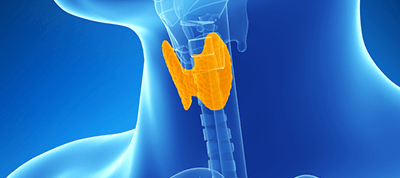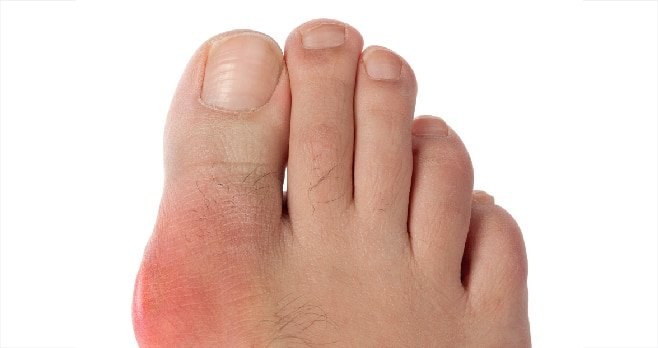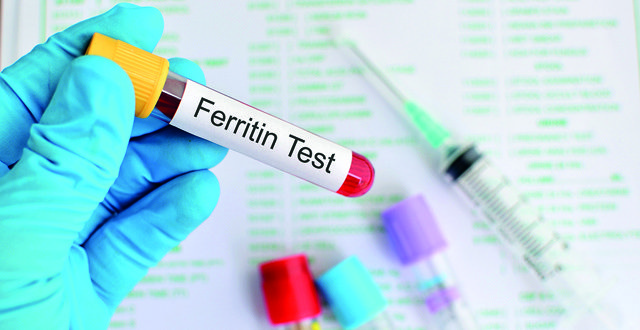<p class=”p1″>In considering the management of acute pain in general practice, a wide range of patient scenarios come to mind. GPs and practice nurses provide pain-related care to patients, <span class=”s1″>such as those suffering from pain</span>ful, acute injuries, including muscular sprains and strains, subacute postoperative pain after hos<span class=”s1″>pital discharge, and acute flares of </span>chronic conditions such as rheu- matoid arthritis. Less-frequently considered is the acute procedural pain that arises in the practice <span class=”s1″>setting itself. While GPs provide a </span>wide range of services to the public, among the most common rea<span class=”s1″>sons for attendance are blood tests and vaccinations. Nearly all general practices in Ireland provide ser</span>vices such as childhood and trav<span class=”s1″>el vaccinations, cervical screening and phlebotomy, while minor surgical procedures are carried out in </span>65 per cent of practices. Unfortu<span class=”s1″>nately, patients often endure acute </span>procedural pain where it could in <span class=”s1″>fact be reduced or eliminated.</span>
<p class=”p1″><span class=”s1″>This article provides a concise overview of acute pain and evidence-based pain strategies for the management of acute pain. A number of resources for the management of procedural pain are pre</span>sented for use in clinical practice.
<h3 class=”p2″>What is pain?</h3> <p class=”p1″><span class=”s1″>Acute pain is related to a specific injury that lasts for a limited time, depending on the cause. A widely-accepted definition of pain was developed by the International Association for the Study of Pain, where it is defined as: “An unpleasant sensory and emotional experience associated with actual or potential tissue damage, or described in terms of such damage.” This particular definition is significant in the context of a person-centred approach to care, as it directs practitioners to consider more than just the physical com</span>ponent of pain.
<p class=”p1″><span class=”s1″>Pain is a much more complex phenomenon than merely the chemical and electrical signals </span>that are being sent and received in <span class=”s1″>the body. Social, psychological and spiritual factors will feature for every person. In terms of socialisation, an individual’s early relationships and interactions, such as those with family, siblings, peers and healthcare professionals, will shape future attitudes and beliefs regarding pain management. Most practitioners are familiar with pain-related psychological phenomena such as needle-phobia, which may come about as a result of psychological conditioning from </span>an early age.
<p class=”p1″>The spiritual component of pain <span class=”s1″>refers to the meaning that the individual applies to a particular ex</span><span class=”s1″>perience; for example, the patient with a history of cancer may assume that sudden pain means a recurrence or progression of disease. As a result of these many variables, pain experiences are dynamic and fluid. Most importantly, we as practitioners must be cognisant of the fact that pain is ‘what</span>ever the person says it is’.
<p class=”p1″><span class=”s1″>While the physical component </span>of pain is only one part, it is neces<span class=”s1″>sary to have at least a general understanding of the way the nervous system processes pain signals and messages. In the main, episodes of acute pain and procedur</span>al pain fall under the classification of ‘nociceptive pain’.
<h3 class=”p2″>Nociceptive pain</h3> <p class=”p1″><span class=”s1″>Nociceptive pain arises from non-neural (nerve) tissue and is representative of a fully-func- tional nervous system providing a protective mechanism; in other words, pain signals are being pro</span>cessed as they should be. Nocicep<span class=”s1″>tive pain can be further classified as either somatic (arising from such structures as bone, muscle, ligaments or skin) or visceral (arising from deep visceral organs such </span>as the bowel, uterus or bladder).
<p class=”p1″><span class=”s1″>There are four steps to the nociceptive pain pathway. Transduction occurs when peripheral nerve fibres (or nociceptors) detect a stimulus, be it thermal, mechanical or chemical (think liquid nitrogen freezing a wart, venepuncture to </span>take a blood sample, or the unmis<span class=”s1″>takable stinging of local anaesthetic). The signal must then start to move towards the central nervous </span>system via nerve fibres that termi<span class=”s1″>nate in the spinal cord; this step is </span>transmission. The central nervous <span class=”s1″>system can then perform modulation of the stimulus, turning elec</span>trical activity up or down, depend<span class=”s1″>ing on many variables. This modulation and final perception of the stimulus by the brain as pain can be affected dramatically by the social, spiritual and psychological </span>considerations mentioned above.
<p class=”p2″>Assessment and diagnosis of nociceptive pain <span class=”s1″>Effective pain management be</span><span class=”s1″>gins with effective pain assessment. For any patient who at</span>tends your practice already suffer<span class=”s1″>ing with acute pain, a comprehensive assessment will include questioning about the presence, location, intensity and description of the pain. It is of critical importance that pain assessment is carried out </span>in partnership with the patient.
<p class=”p1″><span class=”s1″>Direct questions about pain using a variety of words (eg, ‘do you have pain?’ ‘Does it hurt?’ ‘Do you feel soreness?’) will enable you to rapidly ascertain whether pain is present. Asking the patient to identify the painful area by point</span><span class=”s1″>ing to their body is rapid and effective and will give you your first </span>clue as to what is causing the pain; <span class=”s1″>somatic pain is usually well localised, whereas visceral pain is felt as more diffuse or widespread to a general area of the body. Pain intensity may be quantified through the use of numerical or verbal rating scales appropriate to the pa- tient’s age. Adults and older children will be able to rate their pain on a numerical scale of 0-to-10 or a verbal scale of mild-moderate-severe. Most children aged eight years and above will be able to use a pain scale, such as the Wong- Baker FACES Scale or the Faces </span>Pain Scale — Revised (FPS-R).
<p class=”p1″><span class=”s1″>However, observation of pain-related behaviours, such as changes to facial expression and vocalisation is required in such patients as very young children or those </span>with severe cognitive impairment.
<p class=”p1″><span class=”s1″>Asking the patient to describe </span>the pain will provide a second clue <span class=”s1″>as to the underlying pathophysiology; somatic pain may be de</span>scribed as aching, gnawing, throb<span class=”s1″>bing or cramping, whereas visceral pain is usually described as </span>squeezing, colicky and deep.
<p class=”p2″>Planning, implementation and evaluation of management strategies <span class=”s1″>According to the International </span><span class=”s1″>Association for the Study of Pain, every person has the right to ac- knowledgement and treatment of their pain. Of particular significance is the evidence that poor- ly-controlled acute pain gives rise to the development of persistent pain, which may have a profound effect on quality of life. Specifically in the case of infants, the body’s own mechanisms to reduce pain signalling are not fully developed until two months of age, and pain </span>in the early periods of life can result <span class=”s1″>in permanent changes in pain pathways. In this regard, proactive man- </span>agement of acute pain is necessary.
<p class=”p1″><span class=”s1″>A multimodal approach to the management of pain should always be used, which involves the use of a range of both non-pharmacological and pharmacological approaches. Taking such an approach results in enhanced pain relief, reduced consumption of opioid analgesia and reduced adverse effects of opioid analgesia, </span>such as nausea and vomiting.
<p class=”p1″><span class=”s1″>Strategies aim to target multiple points of the nociceptive pain pathway described above (trans- duction, transmission, modulation and perception of pain). For example, a non-steroidal anti-in- flammatory drug (NSAID) will work to reduce local inflammation at the site of injury, thus reducing </span>transduction of pain.
<p class=”p1″><span class=”s1″>The exact pharmacology of par</span><span class=”s1″>acetamol is unknown, but it is hypothesised to work at a number of different sites, thus reducing transduction, transmission and modu</span>lation in the peripheral and central <span class=”s1″>nervous system. Non-pharmaco</span>logical techniques, such as distrac<span class=”s1″>tion, work at the level of percep</span>tion by the brain. It is important to <span class=”s1″>remember that not only are non-pharmacological approaches simple and inexpensive, they are evidence-based and may give the patient a sense of control over their </span>pain. Other examples of non-phar<span class=”s1″>macological approaches include controlled breathing, meditation, topical application of heat and cold, and positioning. Consistent </span>use of these strategies will contrib<span class=”s1″>ute to a comprehensive pain man</span>agement plan for the patient.
<p class=”p1″><span class=”s1″>The World Health Organisation’s Analgesic Ladder should be used to guide the choice of phar- </span>macological agents. This enables a step-wise approach to selecting an <span class=”s1″>appropriate drug and utilises the principle of multimodal analgesia described in this article. Practitioners should take particular note that codeine should not be used in children aged under 12 years or children under 18 who undergo removal of tonsils or adenoids due to sleep apnoea, as the metabolism </span>and subsequent effect of this medication may be unpredictable.
<p class=”p1″><span class=”s1″>Medication should be administered regularly if pain is continuous, with supplemental analgesia for breakthrough pain as the patient requires. For example, in conditions where physiotherapy is required for recovery, extra analgesia should be made available for pain precipitated by move- ment. Evaluation of pain manage</span>ment strategies should be ongoing <span class=”s1″>in order to ensure that these are effective. Timely reassessment of pain after analgesia must be performed in order to ascertain the effect on pain and whether the pa</span>tient is suffering from side-effects; <span class=”s1″>this should be timed according to the onset, peak and duration of ac</span>tion of medications.
<p class=”p1″><span class=”s1″>Specifically, in terms of procedural pain, planning for its management should begin before the procedure commences. If required, an analgesic ladder may be used to guide the selection of pre-procedure analgesia, with non-pharmacological approaches employed in tandem. For example, an adult patient undergoing a dressing change for extensive venous ulceration to the lower limb may require opioid analgesia in addition to paracetamol and an NSAID (if none are contraindicated). Distraction may be used, for example through music, conversation and </span>deep breathing.
<p class=”p1″><span class=”s1″>For procedures where injected local anaesthetics are used, it is </span>important to remember that while <span class=”s1″>the procedure itself will likely be painless, the instillation of local anaesthetic can cause a burning sensation due to its low pH, and a needle must be used in order to ad</span>minister it.
<p class=”p1″><span class=”s1″>Different strategies to manage procedural pain may be used for </span>babies and young children. For ba<span class=”s1″>bies up to one year old, skin-to-skin contact 15 minutes prior to a painful procedure and/or breast-feeding five minutes prior to a </span>painful procedure reduces pain in<span class=”s1″>tensity and regulates heart rate and </span>o2 saturation. This can also reduce stress for parents and help them to <span class=”s1″>feel more in control and confident </span>about their visit to the GP.
<p class=”p1″><span class=”s1″>For older children undergoing </span>vaccinations and blood tests, topical anaesthetics such as lidocaine/ <span class=”s1″>prilocaine cream can be used, in addition to games and singing as methods of distraction, and blowing bubbles to encourage deep breathing. Language is also important; avoid using phrases like “it’ll be over soon” and “it’s going to be okay”, which may herald to a child that something bad is happening. A current social media initiative by the Centre for Paediatric Pain Research includes a number of YouTube videos outlining a guide to these specific strategies for procedural pain for babies and young children and is a valuable resource for GPs, practice nurses </span>and parents.
<h3 class=”p2″>Conclusion</h3> <p class=”p1″><span class=”s1″>General practice clinicians encounter patients who will experience a variety of acutely painful conditions. Any pain experience will have physical, social, psychological and spiritual components, which may have a significant impact on the patient in the short and long term. Effective assessment, diagnosis, planning, implementation and evaluation are necessary in order to optimise pain management. A multimodal approach including non-pharmacological strategies should always be used in </span>the management of acute pain. An <span class=”s1″>analgesic ladder should be used to guide the selection of pharmacological agents. Specific strategies should be used in the management of procedural pain for babies and children, and the practice nurse is ideally placed to support the patient in the management of proce- dural pain. Crucially, even simple interventions can result in a pro</span>found difference for the patient.
<p class=”p3″><strong>References on request</strong>









Leave a Reply
You must be logged in to post a comment.